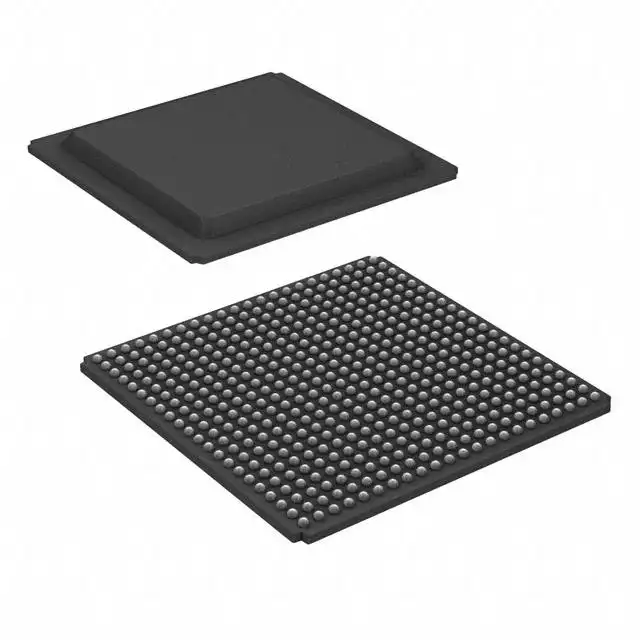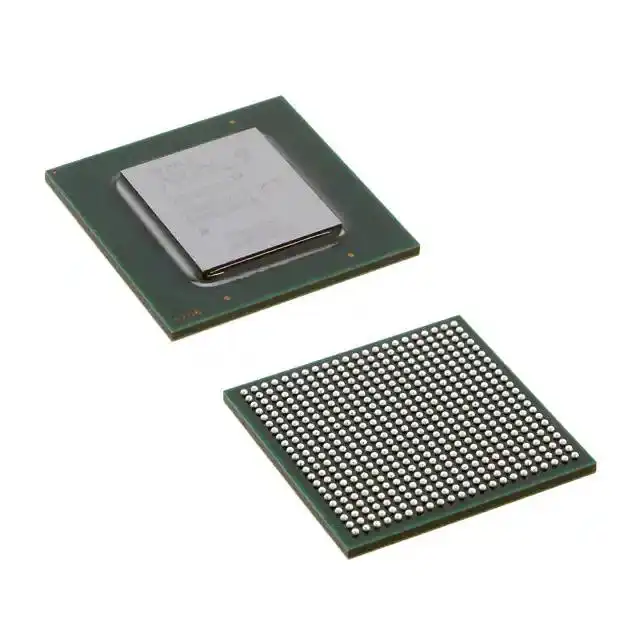


Learn about Xilinx Artix-7 chip parameters, application fields, and important models in 5 minutes
Xilinx Artix-7 is a series of chips for low-cost and low-power FPGA applications. It is a member of Xilinx 7 FPGA and adopts a 28nm process. Its advantages include low cost, high performance, low power consumption, high integration, high reliability, and easy design. It is widely used in industrial control, communication, medical treatment, automobile, aerospace, and other fields.
Here are 10 important model parameters:
Logic Units (LUTs): The number of logic units in the Artix-7 chip varies, up to 215,360 LUTs.
Storage Units (FFs): The number of storage units in the Artix-7 chip varies, up to 430,720 FFs.
DSP slices: Artix-7 chips have different numbers of DSP slices, up to 1,120 DSP slices.
A number of I/O pins: Artix-7 chips have different numbers of I/O pins, up to 500 I/O pins.
Memory: Artix-7 chips support different types of memory, including Block RAM and UltraRAM.
PLL: The Artix-7 chip supports multiple PLLs for high-performance clock management.
Working voltage: The working voltage of the Artix-7 chip includes 1.0V and 1.2V.
Clock frequency: The clock frequency of the Artix-7 chip can reach 600MHz.
Temperature range: Artix-7 chips can work in industrial, commercial, or automotive temperatures.
Package: Artix-7 chips are available in different packages, including BGA, LGA, and CABGA.

Here are ten important Xilinx Artix-7 models:
XC7A15T: One of the most basic models in Artix-7, providing 215K logic units and 760 DSP slices, suitable for low-cost, low-power application scenarios.
XC7A15T-3FGG484E、XC7A15T-3CSG325E、XC7A15T-2FGG484I、XC7A15T-3CSG324E、XC7A15T-L1CSG325I
XC7A35T: Another basic model in Artix-7, providing 33K logic units and 900 DSP slices, with higher performance than XC7A15T, suitable for application scenarios with slightly higher performance requirements.
XC7A35T-L1FGG484I、XC7A35T-3CSG324E、XC7A35T-1CS324I、XC7A35T-L2CSG325E、XC7A35T-L1CSG325I
XC7A75T: One of the high-end models in Artix-7, providing 73K logic units and 2,880 DSP slices, suitable for high-performance computing, digital signal processing, and high-bandwidth communications.
XC7A75T-2FG484I、XC7A75T-3FGG676E、XC7A75T-L2FGG484E、XC7A75T-1FGG676I、XC7A75T-1CS324I
XC7A100T: Another high-end model in Artix-7, offering 101K logic cells and 3,520 DSP slices, higher performance than XC7A75T, suitable for higher performance requirements.
XC7A100T-1CSG324CES9937、XC7A100T-2FGG676CES9937、XC7A100T-3FGG676E、XC7A100T-1FG676I、XC7A100T-2FG484I
XC7A200T: One of the highest-end models in Artix-7, offering 215K logic cells and 7,200 DSP slices, suitable for areas such as highest-performance computing, digital signal processing, and high-bandwidth communications.
XC7A200T-L2FBV676E4322、XC7A200T-L2FFV1156E4322、XC7A200T-1FFV676C4373、XC7A200T-L2FBV484E、XC7A200T-2FFV1156I
XC7A25T: One of the low-power models in Artix-7, providing 23K logic units and 640 DSP slices, suitable for application scenarios that depend on low power consumption.
XC7A25T-L2CSG325E、XC7A25T-L1CSG325I、XC7A25T-2CSG325C、XC7A25T-1CSG325I、XC7A25T-2CPG238I
XC7A50T: Another low-power model in Artix-7, providing 45K logic units and 1,200 DSP slices, higher performance than XC7A25T, suitable for application scenarios that rely on low power consumption and slightly higher performance requirements.
XC7A50T-1FG484I、XC7A50T-3FGG484E、XC7A50T-3CSG325E、XC7A50T-1CSG325C、XC7A50T-L1FTG256I
XC7A35T: One of the low-power low-temperature models in Artix-7, which supports low power consumption and an operating temperature range of -40°C to 100°C, and is suitable for application scenarios with low working environment temperatures.
XC7A35T-L1FGG484I、XC7A35T-3CSG324E、XC7A35T-1CS324I、XC7A35T-L2CSG325E、XC7A35T-L1CSG325I
XC7A50T: One of the industrial-grade models in Artix-7, which supports the industrial-grade temperature range of -40°C to 100°C, and has a 256-pin FTG package, suitable for industrial application scenarios.
XC7A50T-1FG484I、XC7A50T-3FGG484E、XC7A50T-3CSG325E、XC7A50T-1CSG325C、XC7A50T-L1FTG256I
XC7A200T: One of the car-grade models in Artix-7, supports car-grade temperature range from -40°C to 125°C and has a 484-pin FBG package, suitable for automotive electronics, aerospace, and other car-grade application scenarios.
XC7A200T-L2FBV676E4322、XC7A200T-L2FFV1156E4322、XC7A200T-1FFV676C4373、XC7A200T-L2FBV484E、XC7A200T-2FFV1156I
The application of the Artix-7 chip is very extensive. In the field of industrial control, Artix-7 chips can be applied to PLC, HMI, DCS, and other controllers. In the communication field, Artix-7 chips can be used in routers, switches, optical modules, and other equipment. In the medical field, Artix-7 chips can be used in medical imaging, medical monitoring, and other equipment. In the automotive field, Artix-7 chips can be used in systems such as in-vehicle entertainment, in-vehicle navigation, and driver assistance. In the field of aerospace, Artix-7 chips can be applied to flight control, communication, radar, and other systems.

In short, the Xilinx Artix-7 chip is a very mature and cost-effective FPGA chip, which can be applied to many low-cost, low-power application scenarios. It has the following advantages:
Low cost: Artix-7 chip adopts a 28nm process, which can provide excellent performance and low power consumption, at the same time relatively low price, suitable for many cost-sensitive application scenarios.
High performance: Artix-7 chip has the advantages of high logic density, high DSP density, high bandwidth communication, and high-speed serial connection. These characteristics make it widely used in high-performance computing, communication and digital signal processing, and other fields.
Low power consumption: Artix-7 chips have very low power consumption and are suitable for many application scenarios that depend on low power consumption, such as portable devices, embedded systems, etc.
High Reliability: Artix-7 chips use a variety of technologies to improve reliability, such as built-in ECC and fail-safe boot functions, which can greatly reduce the risk of hardware failure.
Ease of design: The design tools and ecosystem of the Artix-7 chip are very mature and easy to use, and there are also a large number of technical support and community resources for reference.
In addition to the above advantages, the Artix-7 chip also has the following features:
Support multiple interface standards: Artix-7 chip supports many communication and storage interface standards, such as PCI Express, Ethernet, USB, DDR3, and SDI, etc.
Built-in hardware debugging function: Artix-7 chip has a variety of built-in hardware debugging functions, including logic analyzer, timing analyzer, signal generator, etc., which can be debugged and tested conveniently.
Flexible I/O configuration: Artix-7 chips have rich I/O resources and support flexible I/O configurations, such as different drivers and level shifters.
Supports multiple clock management techniques: Artix-7 chips support multiple clock management techniques, such as dynamic clock gating, clock dividers, and clock phase-locked loops, which can help designers achieve higher performance and lower power consumption systems design.
To sum up, the Artix-7 chip has an excellent performance in terms of low cost, low power consumption, high performance, and easy design, and can be used in many different fields and application scenarios.